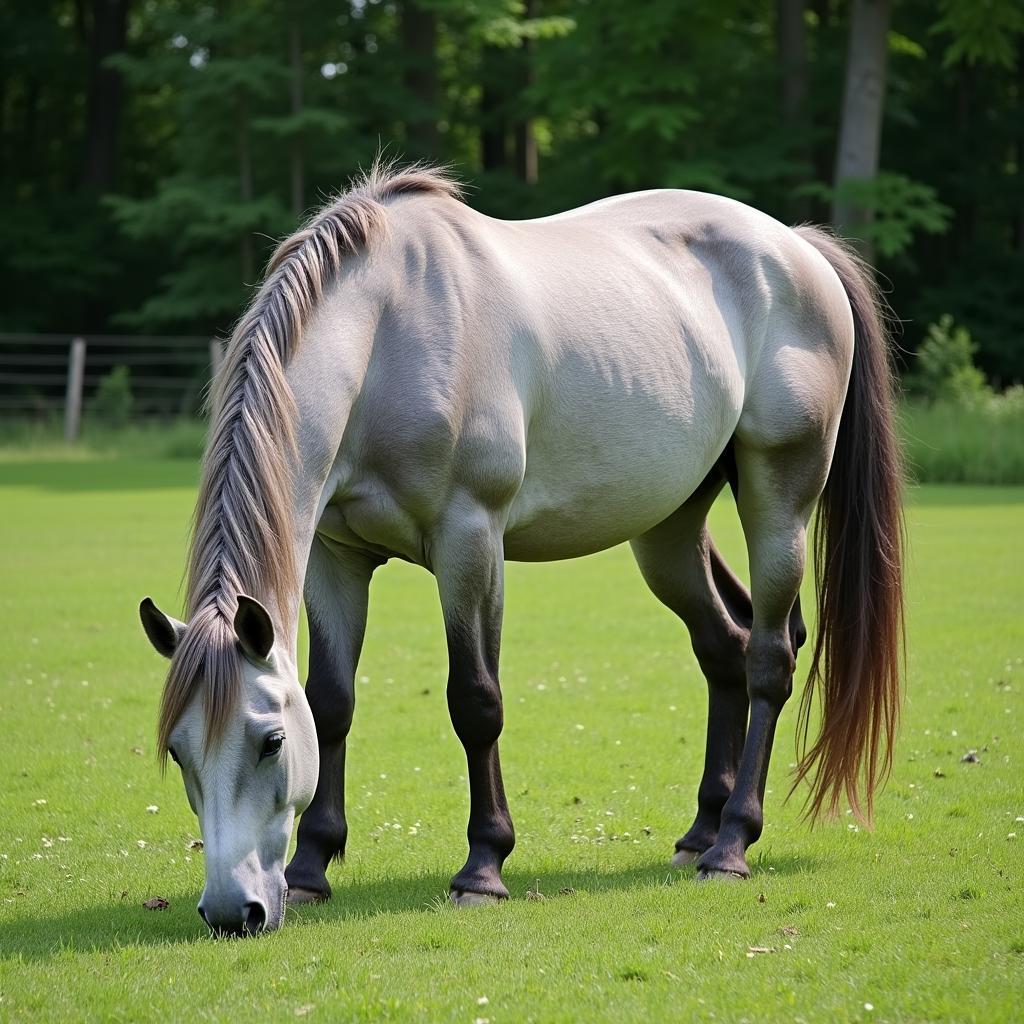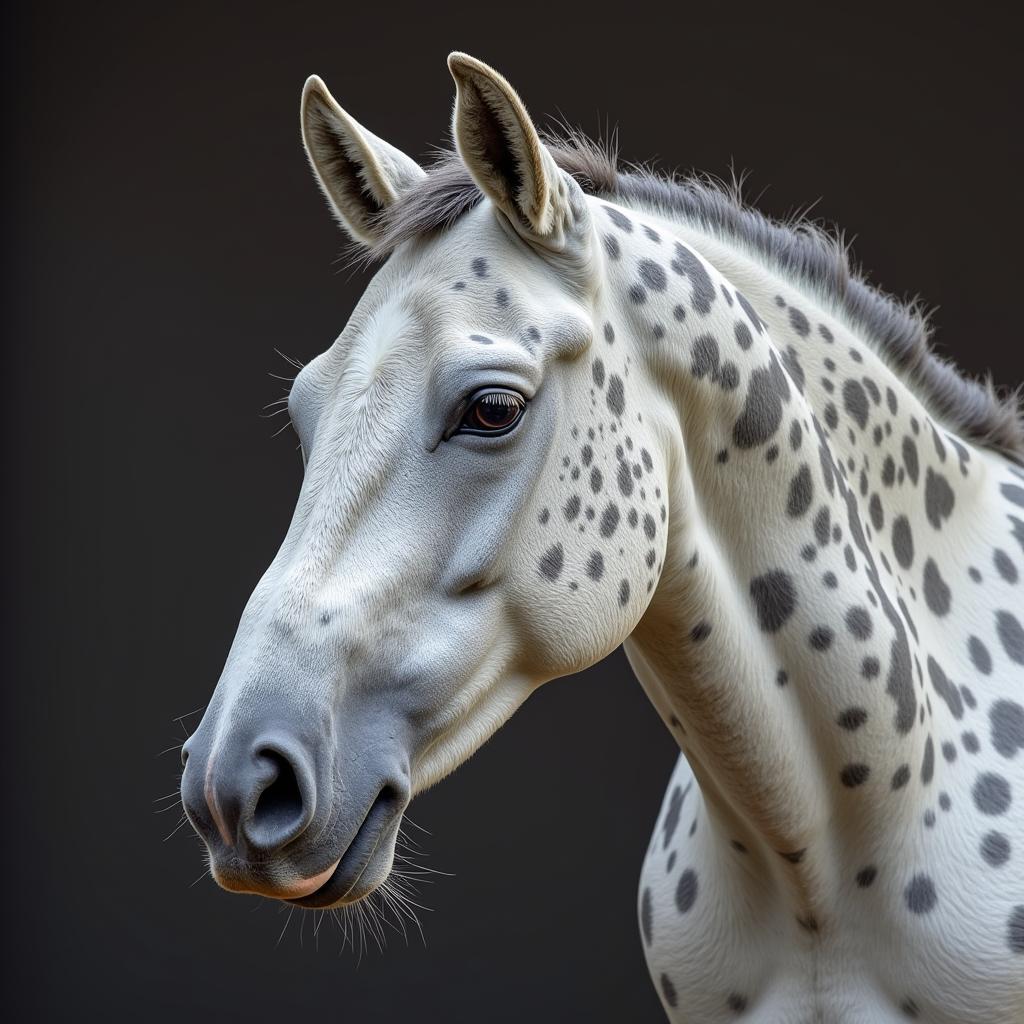The term “Gram Horse” is often thrown around in equestrian circles, leading to confusion and speculation. Is it a specific breed? A particular color pattern? The truth is, “gram horse” isn’t a recognized breed or standard term within the horse world. It’s likely a mispronunciation or a regional colloquialism that has gained some traction. Let’s delve into what people might be referring to and explore some common horse breeds and characteristics often associated with this ambiguous phrase.
Deciphering the “Gram Horse” Mystery
While a “gram horse” doesn’t technically exist, the intent behind the term might point to several possibilities:
- Mispronunciation: The term could stem from mispronouncing existing horse breeds or terms. For instance, “gray horse” or even “Morgan horse” might be misconstrued as “gram horse” in conversation.
- Regional Slang: Language evolves, and it’s plausible that “gram horse” is a colloquialism used in specific regions or communities to describe a particular type of horse.
- Color Confusion: “Gram” might be an attempt to describe a specific coat color or pattern. Horse coat colors have numerous variations, and a less familiar term might be used inaccurately.
 Gray Horse in a Field
Gray Horse in a Field
Exploring Potential Interpretations of “Gram Horse”
Given the ambiguity of the term, let’s consider some common horse breeds and characteristics that people might associate with “gram horse”:
1. Gray Horses: The Likely Candidate
The most probable explanation is that “gram horse” refers to gray horses. Gray horses are born with a base coat color (often black, bay, or chestnut) and progressively lighten with age, developing a stunning silver or white coat. This color transformation often leads to variations in shades and patterns, further contributing to the diversity of “gray horses.”
Key Characteristics of Gray Horses:
- Born dark and gradually lighten over time.
- Can display a range of gray shades from dappled to almost white.
- Often develop distinctive patterns like dappling or fleabitten.
- Prone to melanomas, particularly as they age.
 Dappled Gray Horse Close Up
Dappled Gray Horse Close Up
2. Breeds Commonly Associated with Gray Coats
While many breeds can exhibit gray coloring, some are particularly known for producing gray offspring:
- Lipizzaner: This baroque breed, famed for its elegance and classical dressage skills, is predominantly gray.
- Andalusian: Originating from the Iberian Peninsula, Andalusians are known for their proud carriage and often sport a stunning gray coat.
- Percheron: This draft breed, known for its strength and gentle nature, is often seen in shades of black and gray.
3. Other Possibilities: Color and Conformation
Beyond gray, “gram” might allude to other coat colors or even physical traits.
- Roan: This color pattern involves white hairs intermixed with a base coat, creating a unique and eye-catching look.
- Grulla: This color, often described as a smoky or mouse-colored dun, might be mistaken for a shade of gray.
- Conformation: It’s possible that “gram horse” refers to a specific body type or conformation rather than a color.
 Horse Breeds Collage
Horse Breeds Collage
Clarifying the “Gram Horse” Confusion
The next time you hear someone mention a “gram horse,” it’s essential to engage in further conversation to clarify what they truly mean. While the term itself lacks a precise definition within the equestrian world, it likely stems from mispronunciation, regional dialect, or a general misunderstanding of horse terminology.
By understanding the various possibilities and engaging in respectful dialogue, we can bridge the communication gap and appreciate the vast diversity within the equine world. If you’re ever unsure about a horse-related term, don’t hesitate to ask for clarification – it’s an opportunity to learn and share knowledge!
Need Help with Your Horse?
For expert guidance on horse care, training, and finding the perfect equestrian gear, contact Justus Horses USA.
Phone: 0772127271
Email: [email protected]
Visit Us: QGM2+WX2, Vị Trung, Vị Thuỷ, Hậu Giang, Việt Nam.
Our dedicated team is available 24/7 to answer your questions and provide exceptional support.
Discover more valuable resources on our website:
- Parts of the Horse Diagram: Enhance your equine knowledge with our detailed horse anatomy guide.
- Horse Affiliate Programs: Join our affiliate program and share your passion for horses.
- Jim Anderson Horse Trainer: Learn from the best! Explore the expertise of renowned horse trainer Jim Anderson.